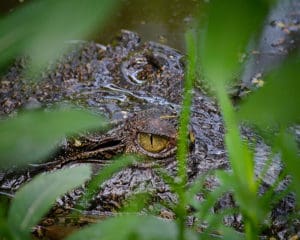

However, hunting success is not used to define the number of animals a poacher, or a canned trophy hunter kills. Hunting success can also be used to define the number of kills a human hunter makes over a specific number of hunts. Usually a single study is used to represent the hunting success of an entire species or in some cases estimations are used. Percentage is the preferred method used to write hunting success rather than raw numbers. Hunting success rate is the percentage of captures in a number of initiated hunts, for example, 1 in 2 to 20 tiger hunts end in success, which means tigers have a hunting success rate of between 5–50%. Hunting success can be measured for predators in different trophic levels. Hunting success across the animal kingdom vary from 5–97% and hunting success can greatly differ between different populations of the same species. Hunting success is used to measure a predator's success rate against a species of prey or against all prey species in its diet, for example in the Mweya area of Queen Elizabeth National Park, lions had a hunting success of 54% against African buffaloes and 35.7% against common warthogs, though their overall hunting success was only 27.9%.

Predators may deploy a variety of hunting methods such as ambush, ballistic interception, pack hunting or pursuit predation. Predators may actively seek out prey, if the predator spots its preferred target it would decide whether to attack or continue searching, and success ultimately depends on a number of factors. The tiger is a solitary hunter that specializes in ambush and prefers preying on ungulates There are also many types of hunting such as whaling, trophy hunting, big game hunting, fowling, poaching, pest control, etc. Humans display a great variety of hunting methods, numbering up to 24 hunting methods. Hunting success is also measured in humans, but due to their unnaturally high hunting success, human hunters can have a big effect on prey population and behaviour, especially in areas lacking natural predators, recreational hunting can have inferences for wildlife populations. Hunting success rate focuses on the percentage of successful hunts. Similar to hunting success, kill rates are the number of animals an individual predator kills per time unit. Different predation strategies can also contribute to hunting success, for example, hunting in groups gives predators an advantage over a solitary predator, and pack hunters like lions can kill animals that are too powerful for a solitary predator to overcome, like a megaherbivore. Prey animals that are in poor health are targeted and this contributes to the predator's hunting success. Predators selectivity target certain categories of prey, in particular prey of a certain size. Hunting success is determined by a number of factors such as the features of the predator, timing, different age classes, conditions for hunting, experience, and physical capabilities. In ecology, hunting success is the proportion of hunts initiated by a predatory organism that end in success.

This can be important for animals looking for brightly coloured fruit in the dark.For other uses, see Hunting (disambiguation).Ĭhameleon successfully capturing prey with its tongue It also protects their eyes from the bright light of day.Īnother advantage is that slit-shaped pupils also work well with lenses that have evolved multi-focal structures that better allow animals to see colour at night. This is a useful trait for nocturnal species whose eyes are designed for low-light levels. One advantage to slit-like pupils is that they allow the iris to contract and expand more dramatically. Goats, sheep, deer, horses, frogs and toads have horizontal pupils. Vertical pupils can be found in dogs, cats, vipers, geckos, crocodiles and some birds.

There are both vertical and horizontally slitted pupils. Why do some animals have slit-like pupils and some have round pupils? What are the advantages and disadvantages of each?Ĭhristopher Dutton, an adjunct professor at the Ontario Veterinary College of the University of Guelph says slit-like pupils have evolved independently in a variety of vertebrate species. This week's Question comes from Derek Sotheby in Burlington, Ontario.


 0 kommentar(er)
0 kommentar(er)
